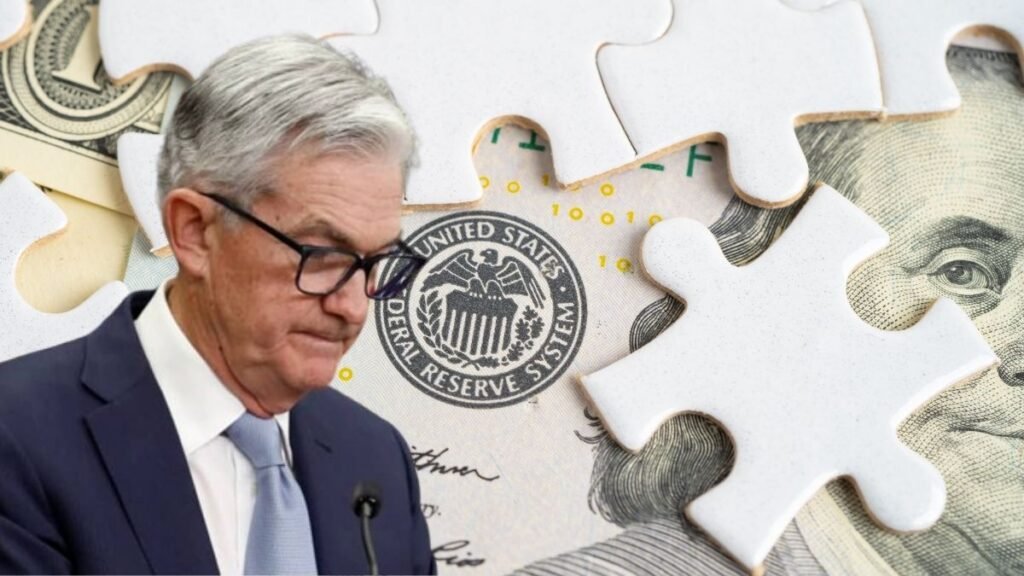With the Fed Meeting March 2024 supposed to take place today, investors are eager to find out the decision regarding the rate cuts that the Federal Reserve will make.
Fed Meeting March 2024
The Fed Meeting March 2024 will take place later today. However, there is a slim possibility of any significant changes to monetary policy. Along with announcing its rate decision on Wednesday, the Fed Meeting March 2024 will also update the public regarding their future economic forecasts and expectations for interest rates.
Even though all eyes are on the two-day Federal Open Market Committee meeting, which will give hints on interest rates, the Federal Reserve is expected to maintain its stance on the rate cuts until it receives better data showing a reduction in inflation.
Mark Zandi, Chief Economist at Moody Analytics, also believes that the Federal Reserve will probably stress the fact that they will not be introducing rate cuts anytime soon.
Market expectations have shifted as well. Traders had expected rate cuts to start in March and continue with six or seven cuts throughout the year, but now they are adjusting to the idea of fewer cuts, which might start in June.
The Fed March Meeting 2024 will be closely watched to understand how the interest rates might progress this year. However, analysts have predicted that policymakers might maintain a cautious approach, stressing inflation data before considering rate cuts.
Investors are closely looking at the FOMC meeting, focusing on the “dot plot” of members’ rate expectations. This plot shows how the 19 FOMC members, both voters and nonvoters, are predicting rates to happen through 2026 and beyond.
In the last meeting, the dots suggested that three rate cuts will occur in 2024, followed by four in 2025 and three more in 2026. Eventually, the long-term federal funds rate is expected to settle around 2.5%, a rate that the Federal Reserve has deemed neutral for growth.
Simply put, if just two FOMC members decide a tighter monetary policy is necessary, the expected rate cuts this year could be reduced to two. However, this is not what is generally expected.
According to Citigroup economist Andrew Hollenhorst, it only needs two individual dots moving higher to raise the 2024 median of decreasing rate cuts. He adds that three dots are enough to push the long-run dot 25bp higher.
However, the combination of inconclusive activity data and slowing year-on-year core inflation should be just enough to keep dots in place and Fed Chair Jerome Powell could still guide the committee to believe that they are on track to gain ‘greater confidence’ to cut policy rates this year.
The Fed Meeting March 2024 is unlikely to vote for a rate cut this week. Moreover, their statement from the last meeting and recent public comments from Fed officials suggest they are not considering a cut right now. Instead, the statement may signal a change in the outlook and the conditions needed for future rate cuts.
Along with the information on rate cuts, the Fed Meeting in March 2024 is also supposed to release its latest update on the economy, including forecasts for GDP, inflation, and unemployment. This report is also known as the Summary of Economic Projections (SEP).
The data will be closely watched to understand any changes in inflation forecasts and how that might impact the rate expectations.
Looking forward, the markets are likely expecting the Federal Reserve to continue with fewer rate cuts this year, but still some cuts. There is also anticipation regarding the Fed’s discussion on reducing its balance sheet.
Fed March meeting 2024 is not just important for Wall Street as it affects global markets too. Most central banks worldwide take information from the Federal Reserve to decide what to do next. When the U.S. central bank indicates it’s moving cautiously due to concerns about potential spikes in inflation, other central banks pay attention.
As concerns about growth rise in various parts of the world, central bankers are also looking for guidance. Higher interest rates usually strengthen currencies and raise prices for goods and services, so they want to know the Fed’s direction regarding potential impacts on global economies.
Read Also:
Bitcoin Retreats as GrayScale ETF Daily Outflow Hits a New High
Bank of Japan Ends Negative Rates, Raises Rates for First Time in 17 Years

